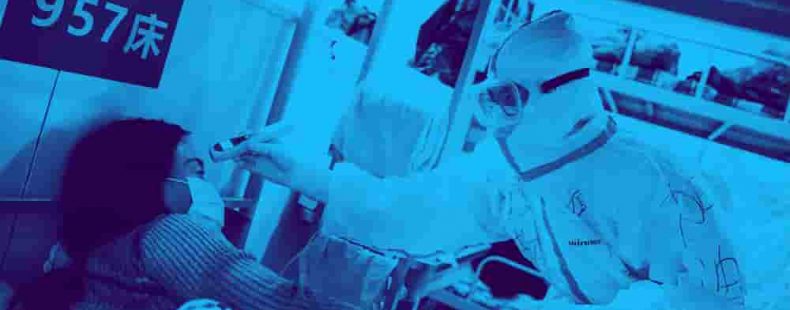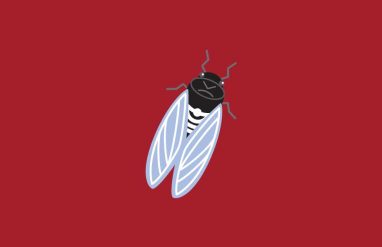by John Kelly, Senior Research Editor at Dictionary.com
The situation of the coronavirus outbreak is changing fast. And news and information about the disease can be overwhelming, not least of which are the many new, confusing, and technical terms being used about the outbreak. Understanding these terms is essential to helping people stay informed and safe—and we take seriously our role in defining and explaining them for you.
In addition to our in-depth articles on pandemic vs. epidemic, quarantine vs. isolation, respirator vs. ventilator, contagious vs. infectious, virus vs. bacteria, asymptomatic vs. asymptotic, and COVID-19, we have put together a glossary of some of the most important terms about COVID-19 to keep you up-to-date and in-the-know. We will continue updating the glossary as needed as the situation evolves.
For health, safety, and medical emergencies or updates on the novel coronavirus pandemic, please visit the CDC (Centers for Disease Control and Prevention) and WHO (World Health Organization).
Did any of the words below make it to the top as the 2020 Word of the Year? Find out here!
aerosol
An aerosol can refer to when liquid or solid particles are dispersed in a gas, usually the air. Fog, mist, and smoke are aerosols. Those tiny particles themselves can be called aerosols.
In epidemiology, aerosols specifically refer to tiny particles (under 5 micrometers) containing a virus or other infectious agent. These particles get exhaled in a fine mist when an infected person talks or breathes, and then can get easily inhaled by other people.
Larger particles (over 5 micrometers) are referred to as respiratory droplets or simply droplets, and are expelled when coughing or sneezing. Droplets fall to the ground within 3–6 feet (1–2 meters), while aerosols can remain in the air longer and spread farther.
If an infectious agent becomes suspended in the air in tiny particles, it is said to be aerosolized. The spread of a disease through the air can be called aerosol transmission or airborne transmission.
The virus causing COVID-19 is known to spread through droplets. Scientists are still researching the extent to which it can spread through aerosols.
apex
Apex variously means “the tip, point, vertex, summit, climax, peak.”
In relation to COVID-19, apex can be used to refer to the highest number of cases in a state or country, after which the rate of infection begins to slow. See flatten the curve.
asymptomatic
Asymptomatic means “showing no evidence of disease.”
Just because a person is asymptomatic doesn’t mean they aren’t infected with COVID-19.
CDC
CDC stands for the Centers for Disease Control and Prevention. It is a US federal agency based in Atlanta, Georgia.
According to its mission statement, the CDC:
… works 24/7 to protect America from health, safety and security threats, both foreign and in the U.S. Whether diseases start at home or abroad, are chronic or acute, curable or preventable, human error or deliberate attack, CDC fights disease and supports communities and citizens to do the same.
chloroquine
Chloroquine is a drug used to treat malaria. It is being explored and tested as a possible treatment for the novel coronavirus.
The chemical formula of chloroquine, a synthetic substance, is C18H26ClN3. Chloroquine is sometimes abbreviated as CQ. A derivative of chloroquine is hydroxychloroquine.
While malaria is caused by a parasite (transmitted by mosquitoes), chloroquine has proven effective in treating SARS, a disease caused by a coronavirus closely related to the one that causes COVID-19. That’s why chloroquine is being tried out as a treatment for COVID-19.
Other drugs being considered for COVID-19 are remdesivir (GS-5734) and lopinavir/ritonavir.
community spread
Community spread is spread of a disease where the infection source is unknown.
According to the CDC, many sources of COVID-19 are due to exposure to a returned traveler who was infected.
communicable
Communicable means “capable of being easily communicated (spread) or transmitted.” COVID-19 is a communicable disease.
Communicable diseases are infectious diseases. All contagious diseases are infectious, but not all infectious diseases are contagious. Contagious diseases are infectious diseases that are easily spread through contact with other people.
contact tracing
Contact tracing is finding out all the people who have come into direct contact with a person infected with a disease. Quarantining such people (known as contacts) and isolating them, if they become infected, helps slow the spread of the disease.
coronavirus
Coronavirus refers to any of various RNA-containing spherical viruses of the family Coronaviridae, including several that cause acute respiratory illnesses.
Notable types of coronavirus are SARS, MERS, and COVID-19. COVID-19 is popularly referred to as (the) coronavirus or corona for short. COVID-19 is referred to as the novel coronavirus because it is a new (novel) virus (i.e., it hasn’t been detected before). Novel coronavirus can be abbreviated as nCoV.
When looked at under a microscope, coronaviruses appear to be surrounded by a spiky array thought to look like a corona, or a crown-like shape, hence the name coronavirus.
COVID-19
COVID-19 is a highly infectious respiratory disease caused by a new coronavirus. The disease was discovered in China in December 2019 and has since spread around the world.
COVID is short for coronavirus disease. The number 19 refers to the fact that the disease was first detected in 2019.
The technical name of the virus that causes COVID-19 is severe acute respiratory syndrome coronavirus 2, abbreviated as SARS-CoV-2.
COVID toes
COVID toes is an informal name for reddish sores on the toes and sometimes fingers, considered a possible symptom of COVID-19, especially in younger, asymptomatic patients.
COVID toes have been said to resemble chilblains (pernio), a rash caused by dengue fever, frostbite, and other such lesions. Some experts think the sores could be caused by blood clotting, a known effect of COVID-19 in some patients. More research is needed, however, to determine if the sores are, in fact, a symptom of COVID-19 and what, exactly, causes them.
epidemic
An epidemic is a temporary prevalence of a disease spreading from person to person in a locality where that disease is not permanently prevalent.
epidemiology
Epidemiology is the branch of medicine dealing with the incidence and prevalence of disease in large populations and with detection of the source and cause of epidemics of infectious disease.
An epidemiologist is a person who studies or is an expert in epidemiology.
WATCH: When Did The Word "Doctor" Become Medical?
exponential
When a disease, such as COVID-19, spreads exponentially, that generally means the number of cases of infection increase steadily but rapidly. Without containment, such exponential spread results in a large number of infections even when an area has a small number of cases to begin with.
Why outbreaks like coronavirus spread exponentially, and how to "flatten the curve" https://t.co/AEnMikff6c
— The Washington Post (@washingtonpost) March 16, 2020
For example, say the number of cases of a disease doubles every day and you start with one case. The next day there will be two cases, the day after four cases, the following day eight cases, and so on. It does not take long to reach high numbers of cases: by two weeks, you already have over 16,000 cases.
Exponential growth means that the amount of new cases over a given time period is proportional to the number of cases already present. In our above example, that proportion is doubling. Such growth can be illustrated using an exponential curve, represented by the function y=2x, where the superscript x (called an exponent, the power to which 2 is raised) represents the number of days that have passed.
flatten the curve
Flatten the curve means slowing the spread of an epidemic disease so that the capacity of the healthcare system doesn’t become overwhelmed. The curve represents the number of cases over time, and flattening that curve means preventing a huge surge of new cases in a very short period of time.
Our #FlattenTheCurve graphic is now up on @Wikipedia with proper attribution & a CC-BY-SA licence. Please share far & wide and translate it into any language you can! Details in the thread below. #Covid_19 #COVID2019 #COVID19 #coronavirus Thanks to @XTOTL & @TheSpinoffTV pic.twitter.com/BQop7yWu1Q
— Dr Siouxsie Wiles (@SiouxsieW) March 10, 2020
furlough
A furlough is a usually temporary layoff from work.
During the coronavirus outbreak, many workers were furloughed as businesses conducting non-essential activities were closed. This was done to prevent the spread of the disease by banning large gatherings as a form of social distancing.
herd immunity
Herd immunity is the immunity or resistance to a particular infection that occurs in a group of people or animals when a very high percentage of individuals have been vaccinated or previously exposed to the infection.
immunity
Immunity is the state of being immune from (“protected from a disease”) or insusceptible to a particular disease; the condition that permits either natural or acquired resistance to disease.
Humans don’t currently have immunity to COVID-19.
immunocompromised
Immunocompromised means having an impaired or compromised immune response; also referred to as immune-compromised or immunodeficient.
incubation period
Incubation period means the period between infection and the appearance of signs of a disease.
isolation
Isolation is the complete separation from others of a person suffering from contagious or infectious disease.
In public health, isolation happens when a person is infected with a communicable disease, and is separated from people who are healthy. This helps stop the spread of disease.
Self-isolation is voluntary isolation. Note that everyday people may use self-isolation when they aren’t infected and are social distancing.
mitigation
Disease mitigation are measures taken to slow the spread of infection. Quarantine, isolation, and social distancing are forms of mitigation.
Washing your hands with soap for at least 20 seconds is one important thing to do to help prevent the spread, or mitigate, COVID-19.
pandemic
A pandemic is a disease prevalent throughout an entire country, continent, or the whole world. A pandemic is an epidemic that has spread over a large area.
The World Health Organization (WHO) specifically uses pandemic to refer to new diseases people do not have immunity for and that have spread worldwide. The WHO has declared the coronavirus outbreak a pandemic.
Pandemic can be both a noun and an adjective (e.g., a pandemic disease).
patient zero
Patient zero refers to the person who is identified as the first person infected with a communicable disease during an outbreak.
Related terms are index case and index patient. An index case is the first known case of an infectious or genetic disease in a group of cases; the affected person is the index patient.
physical distancing
Physical distancing is an alternative term for social distancing. Its use is being increasingly encouraged by some health professionals because the term emphasizes the importance of maintaining physical distance between people to help stop the spread of the disease. The term also emphasizes that people should still socialize using digital technology and social media while they are separated physically.
quarantine
Quarantine is a strict isolation imposed to prevent the spread of disease.
In public health, people are placed in quarantine when they are not currently sick, but have been or may have been exposed to a communicable disease. This helps stop the spread of the disease.
Self-quarantine is when someone isn’t ordered to go into quarantine but chooses to do so out of caution; also called voluntary quarantine.
R0
Pronounced and also written as R-naught, R-nought, or R-zero. The R stands for reproduction or reproductive.
R0 is the average number of people that a person with an infectious disease is expected to spread the infection to (in population immune to the disease). In other words, if one person is infected, how many other people will they infect?
R0is also called the basic reproduction rate. If R0 is greater than 1, it can spread in a population and cause an outbreak.
Estimates vary, but one study measures the R0 of COVID-19 at 2.2. That means that, on average, each person infected with COVID-19 spreads it to two other people. For comparison, the R0 of measles is estimated between a value of 12–18; seasonal strains of the flu have been estimated at 1.3.
respirator
A respirator is a masklike device, usually of gauze, worn over the mouth (or nose and mouth) to prevent the inhalation of noxious substances or the like.
To help protect them from COVID-19, health professionals wear respirators to filter out virus particles as they breathe in so they don’t get infected and can help patients. For these professionals, the CDC specifically recommends using what are called N95 respirators, which fit more tightly around the nose and mouth than medical or surgical masks.
Respiration is breathing, the inhalation and exhalation or air. Respiratory means “pertaining to respiration,” as in a respiratory disease like COVID-19.
screening
Screening is examining a person to see if they have a disease. This frequently involves taking their temperature, asking about symptoms, and asking about potential exposures to infected people.
shelter in place
In general, shelter in place is an order to stay in a safe place indoors due to an emergency (e.g., extreme weather, chemical hazard) until given permission by authorities to evacuate. The specifics of a shelter-in-place order varies depending on the emergency.
During the coronavirus outbreak, shelter in place refers to orders for people to stay at home and not leave unless absolutely necessary. They are put into place to prevent the further spread of the disease and allow health professionals to more effectively treat patients.
Six counties in the California Bay Area, including those affecting San Francisco and Oakland, notably issued a shelter in place effective March 17 until at least April 7, 2020. For the Bay Area shelter in place, reasons considered necessary to leave a place of residence include essential activities such as getting groceries, seeking medical attention, picking up medicine, and taking a pet to the vet for an emergency. People conducting essential business (such as grocery stores, pharmacies, banks, and gas stations allowed to stay open) and providing essential services (e.g., health professionals, waste management workers) are also permitted to leave. People are also permitted to exercise outside the house as long as they practiced social distancing. Violating the order is punishable by a fine or jail.
An order to shelter in place is different from a secure in place or lockdown, which more strictly forbids people to leave a location during an emergency. These measures are sometimes popularly described as draconian, or very harsh and severe.
social distancing
Social distancing refers to measures that reduce contact between large groups of people.
Social distancing measures often entail canceling big gatherings (such as conferences, classes, church services, concerts, and sporting events), restricting mass transit and travel, and working from home.
The CDC specifically recommends maintaining a distance of 6 feet (2 meters) between people.
During the coronavirus outbreak, people commonly spoke or wrote of hunkering down at home as they practiced social distancing.
super-spreader
A super-spreader, or superspreader, is a person infected with a pathogen (such as a virus, bacterium, or other microorganism that produces a disease) and spreads it to an unusually large number of individuals who aren’t infected.
symptom
Symptom is a phenomenon that arises from and accompanies a particular disease or disorder and serves as an indication of it.
Major symptoms of COVID-19 include fever, dry cough, fatigue, and difficulty breathing.
ventilator
A ventilator is a machine that helps a patient breathe. It pumps oxygen into the lungs and removes carbon dioxide through a tube.
In medicine, ventilate can refer to oxygenating the blood (i.e., supplying it with oxygen) or helping someone breathe using a mechanical ventilator.
Because COVID-19 is a respiratory disease, it can cause lung inflammation, which makes it hard for patients to breathe. That’s why ventilators are necessary to help treat some patients with the infection, depending on the severity of their symptoms.
Ventilators are sometimes referred to as respirators. However, ventilators technically refer to machines that help patients breathe, not the protective respirators nurses and doctors wear.
virus
A virus is an infectious agent that replicates only within the cells of living hosts, mainly bacteria, plants, and animals.
Viruses are composed of an RNA or DNA core, a protein coat, and, in more complex types, a surrounding envelope. They are ultramicroscopic, 20 to 300 nanometers (nm) in length. A nanometer is one billionth of a meter. Viruses are also metabolically inert, which is why they only can replicate themselves in cells of living hosts.
COVID-19 spreads through droplets from the mouth and nose of a person with COVID-19 after coughing, sneezing, exhaling, talking, etc.
viral load
Viral load is the amount of a virus in a sample, especially a person’s blood or other bodily fluids. Viral load is typically measured as the number of virus particles per milliliter.
The term viral load is especially used in reference to the amount of HIV in a person’s blood.
WHO
WHO stands for the World Health Organization, a United Nations agency based in Geneva, Switzerland.
According to the WHO, its main role is
… to direct and coordinate international health within the United Nations system. Our main areas of work are health systems; health through the life-course; noncommunicable and communicable diseases; preparedness, surveillance and response; and corporate services.
zoonotic
Zoonotic means “relating to any disease of animals communicable to humans.” The noun form is zoonosis.
The source of COVID-19 is believed to be an animal, which makes it a zoonotic disease.














